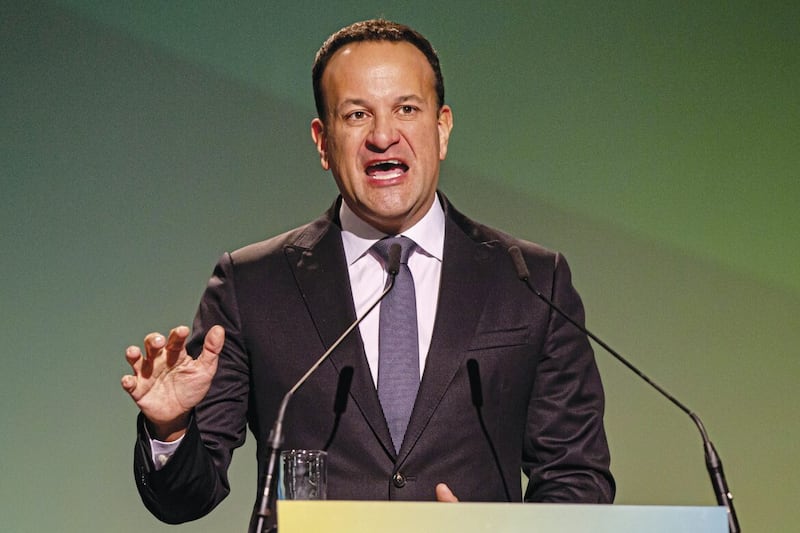The latest news about house prices and interest rates reminded me of the story of someone I knew through work who bought their first home in Dublin during the Celtic Tiger era. Borrowing was cheap, credit readily available and property prices were climbing on an almost daily basis as a result.
In order to buy the apartment off-plan on the northern edge of the city before the price became unattainable, they took out three credit cards, took a €5,000 cash advance on each, lodged that in the credit union, borrowed €45,000 on the strength of their “savings”, paid off the credit cards and had €30,000 of an additional deposit to put down on the flat.
It was mad stuff, but it was the only way they could see to be able to get out of the house they had been sharing with three others since their student days.
Figures released earlier this week by HMRC showed that house sales in the north of Ireland were down by 19 per cent in the first quarter of 2023 compared to the same period in 2022. It’s the slowest start to the year in the housing market for a long time, with only 5,400 sales taking place.
I am not an economist or a housing expert but I would imagine that the reason for some of that is the rise in interest rates pricing people out of mortgages.
I know of one person who came to the end of their three-year introductory fixed rate mortgage, who shopped around extensively but still has to now find an extra £120 per month for their mortgage repayment.
I also know of at least two young couples who had mortgage pre-approval in place, offers accepted and in between that and draw down, the rise in interest rates led to banks recalculating the affordability of the loan and withdrawing their offers. In both instances, these are people who are paying more in rent than their mortgage payments would have been, even with the rate increase.
On the opposite side of the coin, data from Nisra suggested house prices saw their first quarterly fall in more than three years in the final quarter of 2022 with a 0.5 per cent decline on sales prices over the previous quarter. That doesn’t come close to cancelling out an interest rate that has risen by more than 4 per cent since December 2021.
Throughout the island of Ireland, we have traditionally aspired to be home buyers rather than renters and there are a lot of reasons for that. In rural communities, land might have been available for free from family members or at a reasonable cost from neighbours. Social mobility has increased the percentages of home ownership amongst people who would previously not have been in a position to buy.
I think more viscerally, however, that home ownership is a reaction to the landlordism of past centuries where there was a huge fear that you could be turfed out on a whim and there was a lack of stability or permanence in your own home. We had a belief that if we worked hard, were financially prudent and saved diligently, we could have our own homes.
For others, health or wealth inequality means home ownership is nothing more but a distant dream and so we have a system of social housing that was designed to ensure a roof over people’s heads. But with 44,000 people on the waiting list for social housing and around 2,000 affordable or social homes being built each year, that gap is widening too.
The impact of this has been an explosion in the number of privately rented properties, with 17.5 per cent of households in the north being in the private rental sector, a figure that has trebled in the last two decades.
And because private rental costs are demand-driven, prices have shot up so dramatically that average costs in Belfast have hit £845 per month, with some very questionable bedsits and house-to-flat conversions making up part of that housing stock.
It’s a triple whammy of paying so much in rent that saving is impossible, rising interest rates and house prices that are 25 per cent higher than they were at the start of 2020 which is making that dream of owning their own home so much further away for so many people.
Our housing crisis in the north is galloping towards the levels it is at in the south and we need to take urgent action to address it in a joined-up way.
If government can build or approve the building of vast swathes of student housing in Dublin and Belfast, then why can it not build affordable housing at the same pace? We need to look at the introduction of rent pressure zones island-wide in order to control rent inflation.
As well as that, we need to have a proper conversation about high density housing that is sustainable in the long term, where there are green spaces, shops and a variety of housing options all on one site to address the needs of young professionals, families and older people.
If and when Stormont does get back up and running, the draft housing supply strategy targeting the delivery of 100,000 homes over 15 years across all types of tenure is going to need to be very quickly frontloaded to meet present need as well as anticipate future development.








